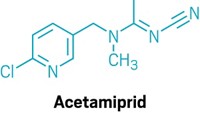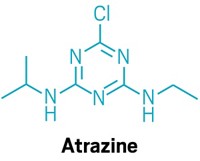Advertisement
Grab your lab coat. Let's get started
Welcome!
Welcome!
Create an account below to get 6 C&EN articles per month, receive newsletters and more - all free.
It seems this is your first time logging in online. Please enter the following information to continue.
As an ACS member you automatically get access to this site. All we need is few more details to create your reading experience.
Not you? Sign in with a different account.
Not you? Sign in with a different account.
ERROR 1
ERROR 1
ERROR 2
ERROR 2
ERROR 2
ERROR 2
ERROR 2
Password and Confirm password must match.
If you have an ACS member number, please enter it here so we can link this account to your membership. (optional)
ERROR 2
ACS values your privacy. By submitting your information, you are gaining access to C&EN and subscribing to our weekly newsletter. We use the information you provide to make your reading experience better, and we will never sell your data to third party members.
Environment
Groups Petition EPA To Ban Endosulfan
Widely used pesticide is an endocrine disrupter and neurotoxicant
by Britt E. Erickson
May 21, 2008
A coalition of environmental health groups, Arctic tribes and indigenous groups, and scientists sent a letter to EPA on May 19, calling for the agency to cancel all uses of the organochlorine pesticide endosulfan. They are seeking the ban because of concerns about the chemical's toxicity, its high potential to bioaccumulate, and its persistence in the environment. Endosulfan is an endocrine disrupter that behaves as an antiandrogen, and it is a neurotoxicant, the petition notes. Numerous studies have shown that the compound affects the reproductive systems and brains of developing laboratory animals.
EPA estimates that farmers use approximately 1.4 million lb of endosulfan each year in the U.S. The pesticide is used extensively on cotton, tomatoes, potatoes, and apples, but residues of it have been detected in numerous other foods, including cucumbers, green peppers, raisins, cantaloupe, spinach, and even butter, according to the petition. Endosulfan has been detected in humans and the environment, including remote areas such as the Arctic, where it is not used.
"It is time to take this dangerous and antiquated pesticide off the market," says Jennifer Sass, a senior scientist with the Natural Resources Defense Council, one the many environmental groups urging EPA to withdraw endosulfan's registration. "The scientific evidence clearly shows that the continued use of this chemical puts the health of exposed farmworkers, communities, and the environment at risk," she adds.





Join the conversation
Contact the reporter
Submit a Letter to the Editor for publication
Engage with us on Twitter